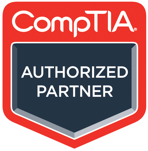Course outline
| Languages |
| |
| Certification | Certification Exam Objectives : SY0-701 | |
Prepare for the CompTIA Security+ SY0-701 certification while building your cybersecurity knowledge, skills, and abilities Our Security+ Certification Prep Course provides the basic knowledge needed to plan, implement, and maintain information security in a vendor-neutral format. This includes risk management, host and network security, authentication and access control systems, cryptography, and organizational security. This course maps to the CompTIA Security+ certification exam (SY0-701). Objective coverage is marked throughout the course. What is Security+ Certification? The Security+ certification is considered to be the minimum level of certification for all IT security positions beyond entry-level. This course delivers the core knowledge required to pass the exam and the skills necessary to advance to an intermediate-level security job. | ||
| Prerequisites |
We also recommend you have attended the CompTIA A+ course. | |
| Objectives | In this course you'll learn how to troubleshoot security events and incidents, and operate within applicable policies, laws, and regulations. Provide infrastructure, application, information, and operational security by identifying and mitigating risks. CompTIA's Security+ is a vendor neutral certification developed with input from industry, government, academia and front-line practitioners. You'll learn about the following CompTIA Security+ topics:
| |
Contents | You'll study the following Security+ domains:
|
